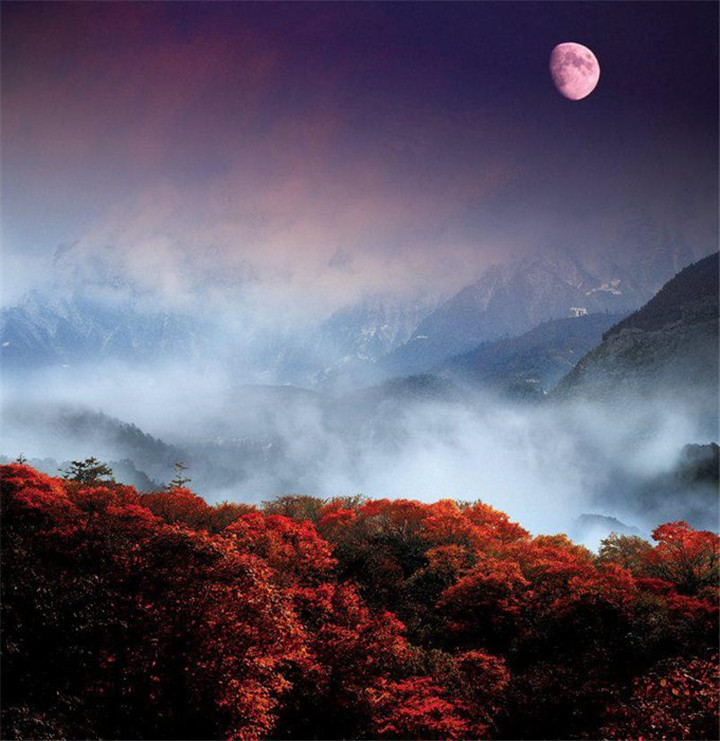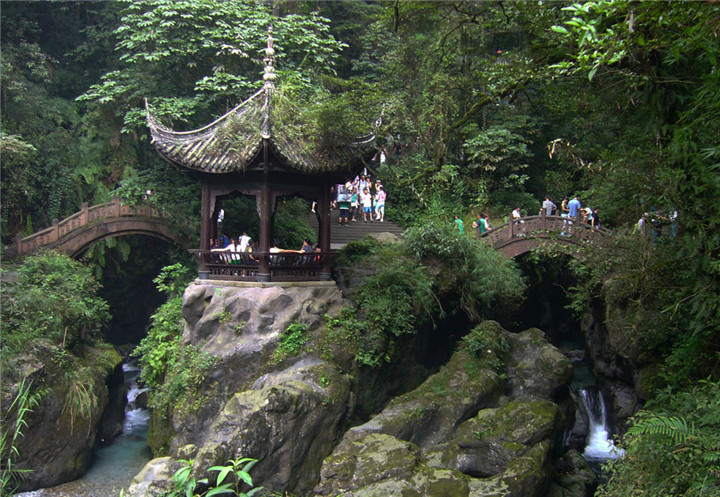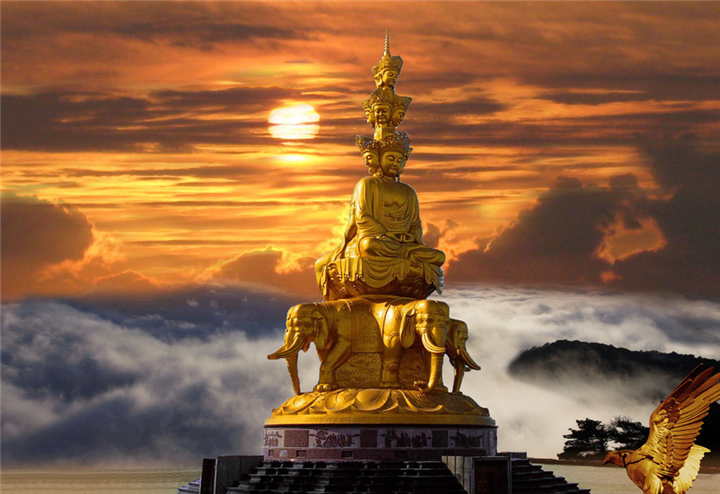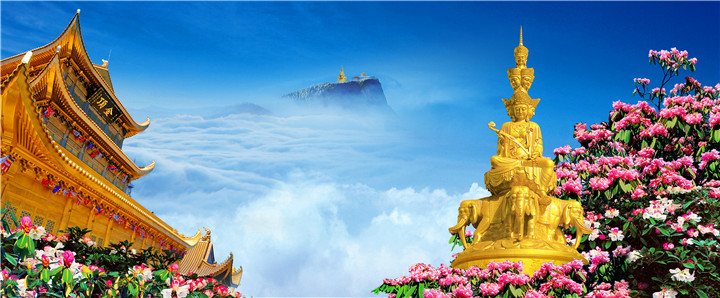What to See at Emei Shan
Emei Shan literally means "Delicate Eyebrow Mountain" — it derives its name from two peaks which face each other and look like the delicate eyebrows of a Chinese classic beauty.
Emei Shan is a UNESCO World Heritage Site featuring many temples, natural wonders and breathtaking scenery. The slopes incorporate several different climates and much wildlife, especially birds and trees. Some of the trees are more than 1,000 years old.

There are also monkeys, who are accustomed to tourists and assertive; they aren't dangerious but will beg for food and grab at bags as hikers walk along the trails. Many hikers carry walking sticks to shoo them away.
There are over 30 Buddhist temples on Emei Shan, 10 of which are large and very old. They are considered masterpieces of creative ingenuity in the way they adapt to the natural enviroment and beauty of the holy mountain.
At the mountain base is Baoguo Monastery, built in the 16th century. The monastery has serene gardens with rare plants, a library of sutras and a huge porcelain Buddha. In the stone staircase of the rear hall are figures of the Eight Immortals, betraying the temple's Taoist origins.

Further up the mountain lies the Crouching Tiger Monastery (Fuhu Si), Emei's largest temple. Once associated with the Taoist martial-arts master Zhang Sanfeng, today it is a Guanyin nunnery. Notable features include the 16th-century, 7m-high bronze Huayan Pagoda, which is engraved with 4700 Buddha images.
The Qingyin Pavilion, built against the mountainside at the foot of the Niuxin Ridge, is an ensemble of pavilions, towers, and platforms, the earliest dating from the early 6th century. Its location and the streams that run through it have earned it the name “The Mountain Garden.”

A few hours' walk or a cable car ride leads to the Golden Summit(Jinding), at 3077m. There are two temples here (the friendly Woyun Nunnery and the large Huazang Si) and thousands of padlocksinscribed with couples' names to symbolize eternal love.
Huazang Si on Jinding was founded as early as the 1st century as the Puguang Hall, later becoming the Guangxiang Temple and receiving its present royal name in 1614. It was extensively rebuilt and refurnished in the 1970s, but every effort was made to preserve its original appearance.
Jinding is the best place to experience the Four Wonders of Mt. Emei: the Buddha's Halo (rainbow-like rings that surround and move with your shadow), the Sea of Clouds, the Holy Lamp (or Divine Lights) and the Golden Summit Sunrise.
From the Golden Summit you can ride a monorail along the ridge toWanfoding (Ten Thousand Buddha Summit), the true summit of Emei Shan.

